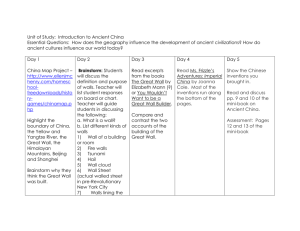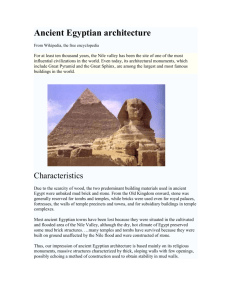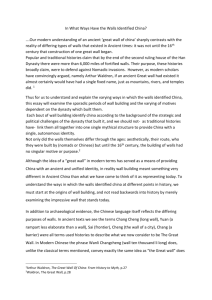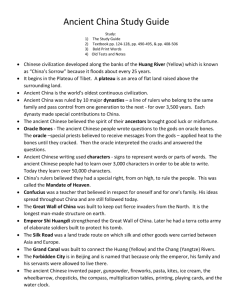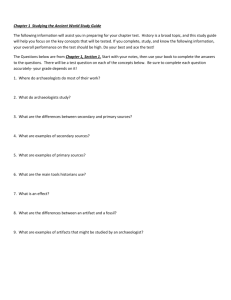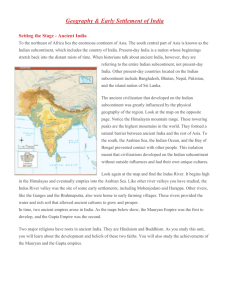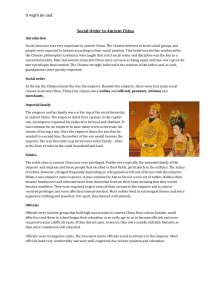Introduction to Ancient China Day 12
advertisement
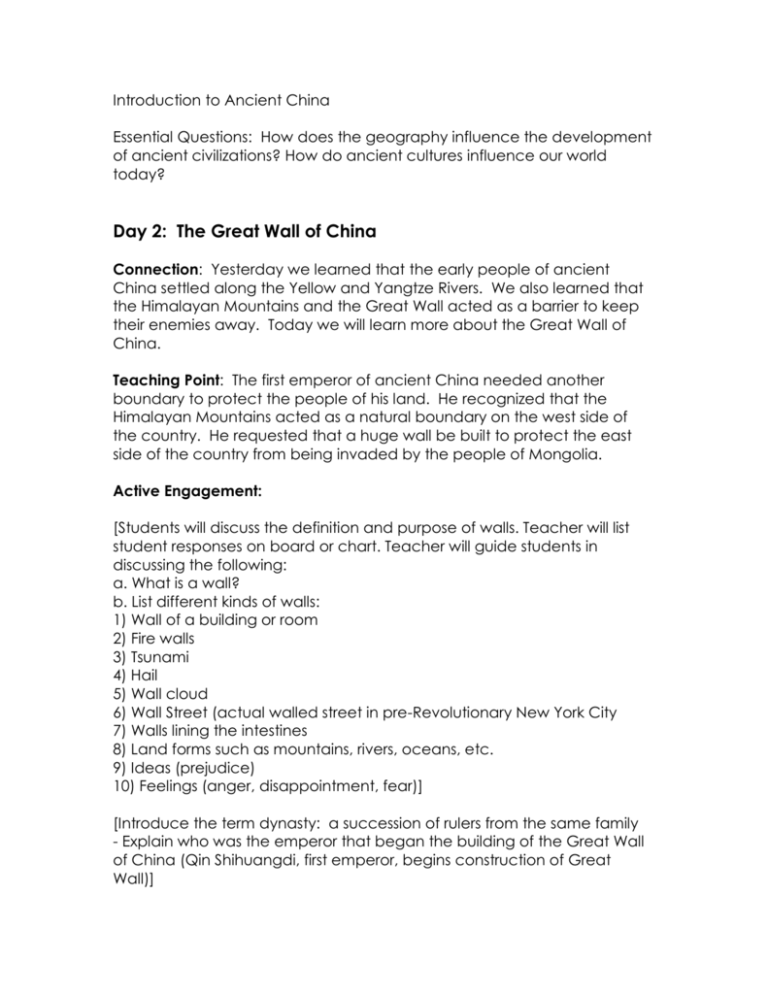
Introduction to Ancient China Essential Questions: How does the geography influence the development of ancient civilizations? How do ancient cultures influence our world today? Day 2: The Great Wall of China Connection: Yesterday we learned that the early people of ancient China settled along the Yellow and Yangtze Rivers. We also learned that the Himalayan Mountains and the Great Wall acted as a barrier to keep their enemies away. Today we will learn more about the Great Wall of China. Teaching Point: The first emperor of ancient China needed another boundary to protect the people of his land. He recognized that the Himalayan Mountains acted as a natural boundary on the west side of the country. He requested that a huge wall be built to protect the east side of the country from being invaded by the people of Mongolia. Active Engagement: [Students will discuss the definition and purpose of walls. Teacher will list student responses on board or chart. Teacher will guide students in discussing the following: a. What is a wall? b. List different kinds of walls: 1) Wall of a building or room 2) Fire walls 3) Tsunami 4) Hail 5) Wall cloud 6) Wall Street (actual walled street in pre-Revolutionary New York City 7) Walls lining the intestines 8) Land forms such as mountains, rivers, oceans, etc. 9) Ideas (prejudice) 10) Feelings (anger, disappointment, fear)] [Introduce the term dynasty: a succession of rulers from the same family - Explain who was the emperor that began the building of the Great Wall of China (Qin Shihuangdi, first emperor, begins construction of Great Wall)] Take out your maps that you created yesterday. Turn to your partner and point out the two boundaries that protected the people of China from their enemies. Be sure to name them both. Identify which was a natural boundary and which men created. Link: Today we learned that that a huge wall was built to protect the east side of the country from being invaded by the people of Mongolia. This was called the Great Wall of China. Tomorrow we will continue to learn more about the building of the Great Wall.
